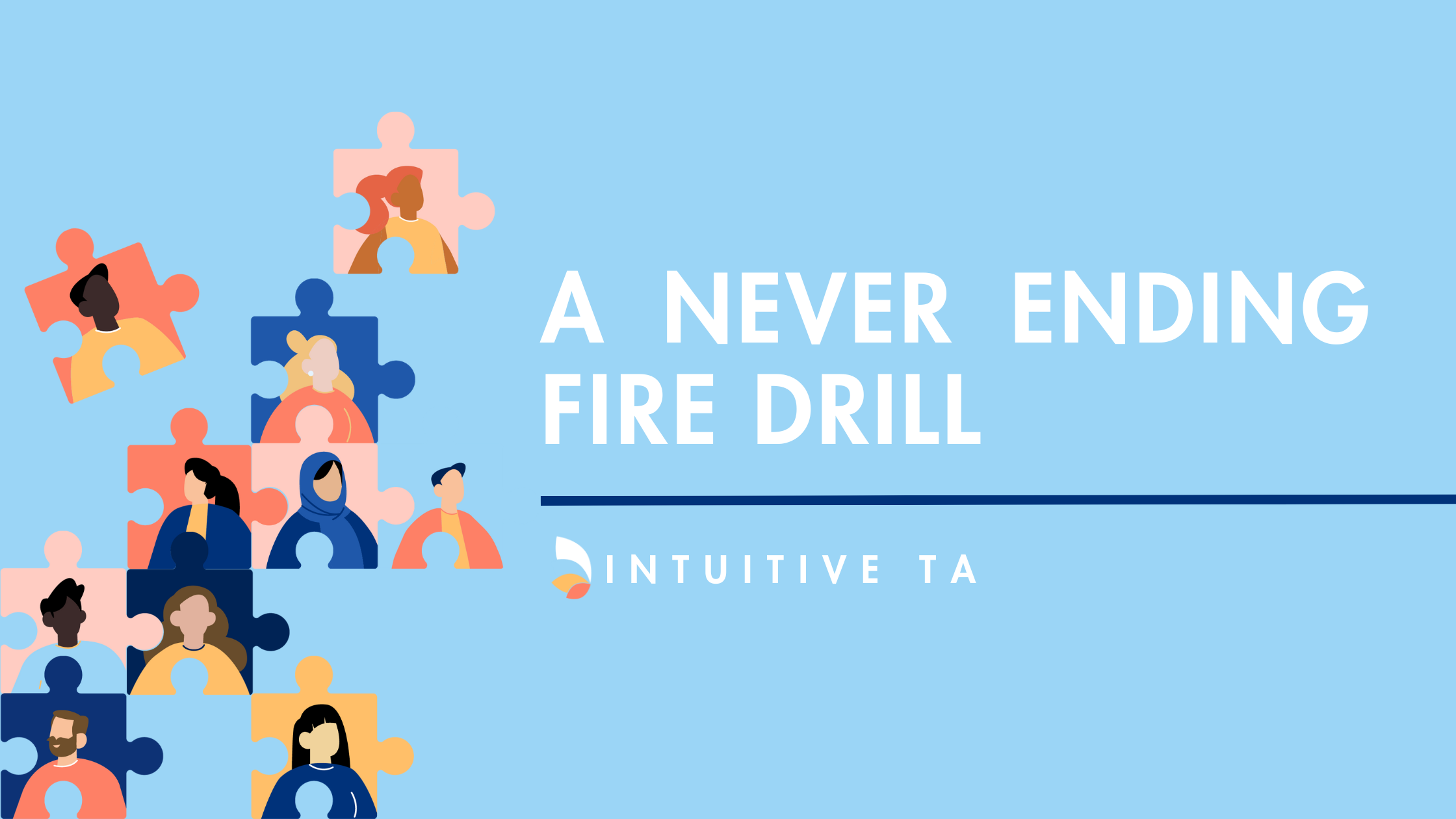The past two years have been a tough ride for talent acquisition professionals, and if any of these challenges resonate with you, it’s likely you’re caught in a never-ending fire drill—especially if you’re working in an SME environment.
1. Reactive Hiring: If you’re always hiring to fill immediate gaps, it can feel like putting out fires. Waiting until a position is critical means you’re rushing to find the right candidate quickly, leading to poor decision-making.
2. Lack of Long-Term Strategy: Without a clear hiring plan, it’s easy to focus on urgent needs without considering the future. This can lead to back-to-back recruitment efforts that feel overwhelming and chaotic and then periods of underutilizing waiting and hoping the team don’t get made redundant!
3. No Clear Criteria: When your team doesn’t have a set of clear, measurable criteria for success in candidates, recruitment can feel more like trial and error than a strategic process. This is not a model to present to leadership
4. High Turnover: If people leave frequently or don’t stay long in the role, it creates a cycle of constantly having to hire, which contributes to the “never-ending” feeling. This can make you feel helpless and is one of the most common reasons for high attrition in TA also
5. Silos in Communication: If hiring managers, HR, and teams aren’t communicating effectively, it can lead to disorganization and missed opportunities. Team misalignment often leads to scrambling to find candidates last minute and overuse of agency
—
How to Stop It:
1. Build a Proactive Hiring Pipeline: Start creating a pool of candidates even before you have an open position. Keep track of potential talent on LinkedIn or job boards, so you’re ready when the need arises. A strong talent pipeline means you’re not starting from scratch every time.
2. Plan Ahead: Create a long-term workforce plan, considering the skills and roles you’ll need for the next 12-18 months. This helps prioritize hiring and avoid last-minute rushes.
3. Define Your Ideal Candidate: Have clear, consistent criteria for what makes a good fit for each role, including culture and long-term potential. This will streamline your recruitment process and help you make better hiring decisions faster.
4. Improve Onboarding & Retention: A solid onboarding program can help new hires feel more integrated and stay longer. Retention strategies like career development, mentorship, and regular feedback can prevent high turnover, reducing the constant need to hire.
5. Streamline Communication: Make sure all stakeholders (HR, leadership, hiring managers) are aligned on expectations. Regular communication about hiring progress ensures no one is scrambling last minute.
6. Consider enhancing your team in peak times: If you are constantly battling high turnover or struggling to find candidates, an expert in your space with industry connections can help alleviate the pressure and bring in qualified talent.
Taking a step back and creating a more organized, proactive hiring strategy can help you escape the fire drill cycle and build a team that’s ready to meet future challenges without the panic.


